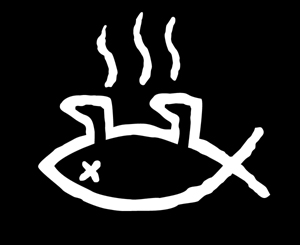How the word “evolution” adapts to its environment
 “The theory that all the living forms in the world have arisen from a single source which itself came from an inorganic form.” – General Theory of Evolution (GTE), Gerald A. Kerkut
“The theory that all the living forms in the world have arisen from a single source which itself came from an inorganic form.” – General Theory of Evolution (GTE), Gerald A. Kerkut
After reading the GTE, it is easy to see why evolutionists try to popularize their theory with students and lay audiences by claiming that evolution merely means “change over time.” But that’s like saying a personal computer is merely a changed typewriter. The GTE actually exposes the much more radical kind of change that evolutionary theory presupposes–all life spontaneously erupted from “an inorganic form,” i.e., a rock or goo (never mind how the rock or goo got there). But leading evolutionists can’t just stand up and say, “We believe all life evolved from a rock!” They must massage the terms in order to make them palatable to the general public. When used by evolutionists, the word “evolution” is itself a mutating term.
Evolutionists are selling the idea that a lot of little changes in a creature, microevolution, eventually add up to big changes, macroevolution. However, the term “microevolution” is spin for adaptation. Microevolution, or more accurately “change within a kind,” does not lead to macroevolution–it eliminates the need for it. If a population of creatures can adapt to its environment because of the genes it already has, it has no need to evolve. This makes the mechanism of evolution self-defeating. While microevolution (adaptation) is a reality, macroevolution (e.g. a reptile changing into a bird) lacks validity both in theory and in evidence. Here is an example of each:
Microevolution – Over a few generations, a mosquito population becomes resistant to insecticide.
Macroevolution – Over a few million years, a type of lizard gradually becomes a bird.
These two concepts are vastly different, not merely stages of the same process as evolutionists would have us believe.